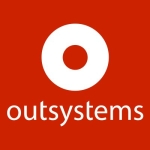Immediate insight into reporting. For us it's about trying to wrap our heads around the volume of tickets that are coming in the door. How quickly we're getting our turn time done? Those were things that were missing from our incident management platform. We could basically do a data dump once a week, dump that into an Excel spreadsheet, then do some computation on the side, and get those numbers out.
With ServiceNow, we're able to generate those reports daily. We can get that feedback almost immediately. We just started turning on performance analytics as well. That's one of the reasons I'm here [at Knowledge16], is to take the courses to learn more about performance analytics. We're really looking forward to that, to get it in more real time, and provide dashboards.
It was all on Fuji. Some of the things I'm going to say might already be in Geneva and Helsinki. We use a zipper product for our project management portfolio, demand management and resource planning. From what I have heard, and what I've seen thus far, resource management needs to be a little tighter. We're running performance models around capacity planning. We need to know: How many resources are in play? How many hours are they actually working? What's the requirement for all those resources on those different pieces? How does that lay against what we're allocating?
I can't have resources available for 45 hours a week, and then deploy them against 60 hours, and they only turn in 37 hours. The resource planner we have today actually calls out those discrepancies. I'm hoping that with performance analytics this will too. I haven't seen a lot of that in play yet because I think it's still fairly new for them. I think if you're going to run your IT shop like a business, you really need that kind of insight.
The other thing we do is we report out against three different modalities in our IT shop. 1. You got to run the shop. 2. You've got to maintain the business to keep the doors open. 3. You got to grow the business. There's some fancy math that you have to do against what people are doing, and how they're deploying their time to roll that back into one of those three categories. With the current system we have, there's a way of doing data masking and manipulating it so that way you can form these common buckets. I don't know that this will do that, I hope it will.
With ServiceNow, you have to do a lot of manipulation ahead of time to get to what that end state is. That said, coming to the conference and playing with Geneva, and playing with Helsinki, I've got a slightly different opinion. I'm pushing my guys to move from Fuji directly to Helsinki. Just because it does allow me to set those records up the way I want to quickly, as opposed to playing with the report to get that structure right. The only way I can describe it is, if you really enjoy building formulas, and data drops, and pivot tables, and having all that, and then analyzing the data, Fuji is great. Excel is also great for that, but it's not what I want to do. I want to actually analyze the data.
I've been using it about six months.
It's one of the few systems we have in our house that hasn't gone down. It's very stable. As a matter of fact, we don't even put it on our availability list because it's up.
We're currently on the Fuji release. There's some other things that we want to do like Demand Management and PMO they're coming out with in Geneva and Helsinki. It's one of the reasons we're here at the conference is to see if it will be scalable to those processes as well. From what I've seen thus far, it's pretty scalable.
To be honest, we have mostly in-house support. Anytime I've had a call or a question, it's been answered usually within a few days. Most of what we're looking for is just how do we get the right data. Our guys are able to go back to the system analysts, and get that information out, and then tell me which field to put in the report. It's a fairly quick turnaround.
We were using a competitor product at the time. It was from our corporate office. We brought a real sharp guy in from NetApp. He had used the ServiceNow platform for about half a decade. He's been to just about every conference. He was bragging about the fact that he was at the Knowledge 2011. He's a pretty sharp guy. He brought it to our attention, and then helped implement it. We tease him and say that maybe he's brought a lot of his bad habits from the other companies into this one too. Along with some of our bad habits from CA, which is us poking fun at the customization. He really does know the product inside and out, and we're lucky to have him.
To be honest, I wasn't involved a whole lot with the initial setup. At that point, I was in the PMO. I was watching it get executed as a project. It was a fairly quick project. I think we implemented six or seven of the modules that are out there reporting incident management etc. We were up and running in about two to three months.
Now that said, there's always the PMO side of the house where I got to look at it and go, "Did we get all the requirements?" I think we did it more agile. We're still finding things that we'd like to do different. Things we'd like to change now that it's up and running. Getting it up and out of the box is really quick. We did some customization which was really quick too.
Go ahead and get it. You'll have a cleaner insight into your organization, and how it's really working. You're going to do a little fighting with your groups if they're not already doing careful time tracking. ServiceNow is based at the task level. They assume that they are going to give you a task. That task has some time collateral associated with it. That tells you how long you're spending on certain things.
You have better insight into those tasks, better insight into how that time is being deployed. If your organization isn't already doing that, you're going to have a little bit of a culture shift. If that's where you want to go, if you want to transfer your business from "Trust us, we'll just get it done," to "I can actually demonstrate how we're doing it." ServiceNow is the right product for you.
I would say Fuji is about a 7, and what I was playing with the other day in the labs is probably about an 8 or a 9. It's a great product. I like where they're road mapping it. They have a very clear plan, and where they're going next. That's pretty exciting. We'll keep the product in-house for a couple of years.


















